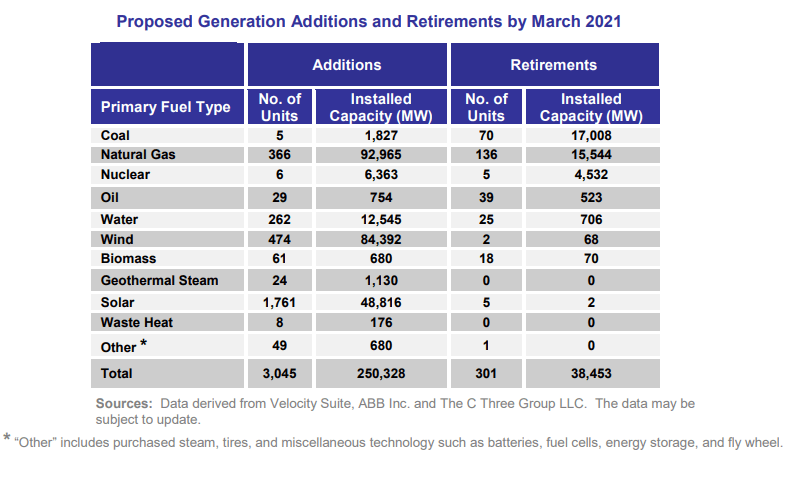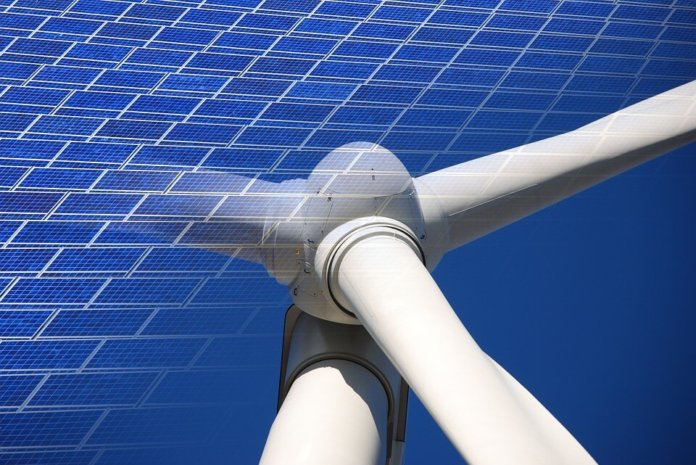Wind and solar accounted for more than 98% of all new U.S. electrical generation placed into service in the first two months of this year, according to a SUN DAY Campaign analysis of data released by the U.S. Federal Energy Regulatory Commissions (FERC).
FERC’s latest Energy Infrastructure Update, which offers summary statistics for January and February of this year, also reveals that the total installed capacity of renewable energy sources (biomass, geothermal, hydropower, solar and wind) now provides over one-fifth (20.39%) of total available U.S. generating capacity, says the nonprofit SUN DAY Campaign.
Combined, wind and solar alone exceeded one-tenth (10.18%) of installed capacity – a share greater than either nuclear power (9.11%), hydropower (8.49%) or oil (3.64%). (SUN DAY notes that capacity is not the same as actual generation. While renewable energy capacity as of February reached 20.39% of the nation’s total, electrical generation was a bit lower. According to data provided by the U.S. Energy Information Administration, electrical generation by renewable sources totaled 17.6% in 2017.)
Citing FERC data, the group says 14 new “units” of wind, totaling 1,568 MW, came into service in January and February, along with 40 units of solar (565 MW) for a total of 2,133 MW. Notable wind projects that came online include Prairie Wind Energy LLC’s 168 MW Prairie Wind Project in Mahaska County, Iowa, and MidAmerican Energy Co.’s 170 MW Beaver Creek Wind Project in Greene County, Iowa, according to FERC’s report.
Two units of natural gas provided another 40 MW of new capacity. No capacity additions were reported for any other energy sources (coal, oil, nuclear, hydropower, biomass and geothermal), the nonprofit notes.

FERC’s report further suggests that the rapid expansion and growing dominance of renewable energy sources will continue at least through March 2021, according to SUN DAY. Proposed new net generating capacity (i.e., additions minus retirements) by renewables over the next three years totals 146,717 MW, or 69.2% of the total (211,875 MW). Proposed new net generating capacity by wind (84,324 MW) and solar (48,814 MW) alone are 62.8% of the total – supplemented by hydropower (11,839 MW), geothermal (1,130 MW) and biomass (610 MW).
Most of the remaining net proposed new generating capacity to be added between now and March 2021 is accounted for by natural gas (77,421 MW, or 36.5%), the group says. Net proposed additions by nuclear total only 1,831 MW, while those from oil are just 231 MW. FERC also lists proposed new net generating capacity from waste heat (176 MW) and “other” sources, such as fuel cells and energy storage (680 MW). Notably, the net generating capacity of coal would actually decline by 15,181 MW as 17,008-MW of coal capacity is retired, eclipsing just 1,827 MW of additions.

FERC’s latest Energy Infrastructure Update was released on April 23. The full update can be found here.




